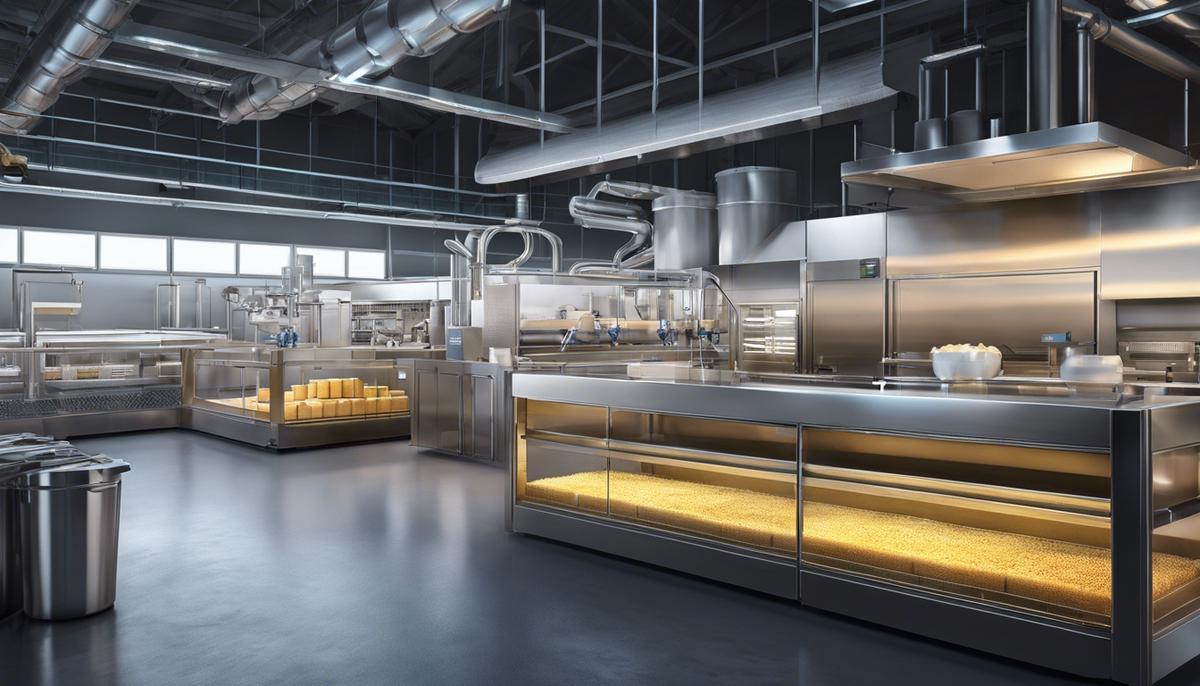

Agridisk
Egypt - Alexandria
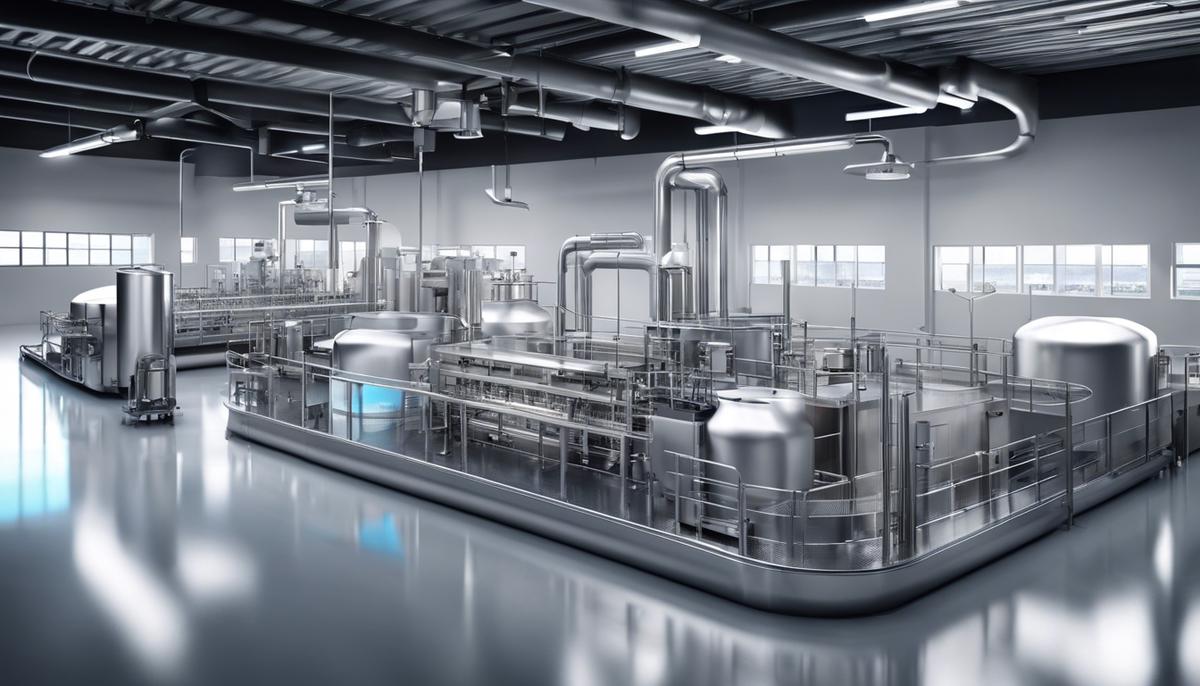
Dairy industry | Dairy industry trends 2023
Description: The essence of the dairy industry traces back through centuries, forming an integral part of global food systems, economies, and culture. Threading across eras of change and progress, the dynamism of the dairy industry represents the interplay of technological advancements, human enterprise, and environmental interaction. A journey through the historical underpinnings to the present configuration reveals not just an industry, but a vast tapestry of scientific discovery, socio-economic shifts, and environmental implications. This narrative seeks to illuminate the complexities and implications of the dairy industry in its multi-dimensional aspects. The diary industry has been an integral part of human civilization since our ancestors first domesticated animals. As ancient as it may be, this industry has seen continuous evolution through a series of defining moments that shaped its current form and function. One of the earliest milestones can be traced back to 7000 BCE-6000 BCE when humans, in regions like modern-day Iran and Turkey, first started to herd cattle and sheep, primarily for dairying purposes. Anthropologists argue that the transition from nomadic to sedentary lifestyles was largely catalyzed by dairying. The Middle Ages heralded another defining moment as monks in monasteries began producing cheese, loosely marking the origins of artisan cheese making. Cheese crafting, a valuable skill, was passed down from generation to generation, establishing cottage industries that endured for centuries. Fast forward to the 18th and 19th centuries which marked a pivotal paradigm shift for the industry. The urbanization process, driven by the Industrial Revolution, demanded innovative ways to deliver fresh milk to expanding cities. The advent of the glass milk bottle in 1878 offered a way to transport and store milk in a clean, reusable container, drastically reducing the spread of diseases and ensuring a safer supply of dairy products. However, a challenge remained - milk spoiling. To tackle this issue, French scientist Louis Pasteur developed a game-changing process in 1864 which has the licensee of his surname - Pasteurization. The process of heating milk to a given temperature for a specified period, which kills harmful bacteria without significantly altering milk's nutritional value, proved revolutionary. As technological advancements continued into the 20th century, dairy farming underwent a transition from labor-intensive manual tasks to a more mechanized and efficient system. In the 1950s, the introduction of automatic milking machines enabled farmers to drastically increase their productivity and ensure the consistency of milk output. Just as consequential was the advancement in genetic science and selective breeding techniques in the latter part of the 20th century. Through selective breeding, dairy farmers were able to optimize milk production, culminating in the creation of the Holstein Friesian cow, widely recognized as the world’s highest-production dairy animals. Today, the dairy industry continues its quest for sustainability, productivity, and innovation in the midst of global challenges like climate change, animal welfare standards, and the rise of plant-based alternatives. Undoubtedly, the history of the dairy industry is a testament to human ingenuity, resilience, and adaptability. Though what the future holds is speculative, the industry’s robust evolution provides assurance of its capacity to surmount forthcoming hurdles. One must take note of the increased integration of technology along the entirety of the dairy production process. Innovations such as robotic milking systems and precision dairying techniques now champion an era of 'Smart Dairy Farming.’ Echoing the Industrial Revolution's mechanization wave, this fresh tide of high-tech systems provides a compelling opportunity to bolster efficiency, productivity, and profitability while minimizing the potential for manual errors and labor shortages. Akin to many other industries, the dairy sector is not immune to the ramifications of the burgeoning digital world. The surge of 'Big Data' presents vast opportunities, especially in terms of applying Artificial Intelligence (AI) and machine learning to predict animal health issues or augment breeding programs. By leveraging technology, modern dairy operations are achieving a level of efficiency hitherto unseen in the industry's extensive chronicle and taking giant strides towards proactive rather than reactive management. The next critical consideration is consumer behavior. Health consciousness is not a new trend but continues to ascend, with an ever-growing emphasis on clean-label, organic, and hormone-free dairy products. Additionally, the rising demand for high-protein foods has opened new doors for the dairy industry with next-generation dairy ingredients finding their place in everything from energy bars to infant formulas. However, this rising health-consciousness is a double-edged sword, fueling the emergence of plant-based dairy alternatives, posing a palpable threat to traditional dairy products. Sustainability is a thread that runs through every industry narrative today, and dairy is no exception. Stakeholders are grappling with the environmental footprint of dairy operations, as they face mounting pressure to adopt eco-friendly practices to mitigate climate change. Concurrently, animal welfare standards are becoming increasingly stringent, necessitating the design and adoption of humane farming practices. Finally, the shifting terrain of international and domestic regulations, particularly those related to trade, raw milk quality, and animal welfare, continually redefines the margins within which dairy enterprises must operate. Regulatory upheavals have the potential to bring about transformative changes, requiring the industry, much like in its history, to mold itself to new circumstances. Intricately woven together, these elements are continually recasting the dairy industry. It’s a fascinating testament to the enduring dynamism of this ancient industry—constantly adapting and innovating to weather and flourish in the face of change. No matter how these trends and challenges unfold in the future, certainly, the dauntless dairy industry's narrative will continue to be one of resilience and adaptability. Diving deeper into the scientific methodologies involved in our modern dairy production, the integration of digital technology has become a focal point. This technological shift isn't simply limited to the introduction of mechanized tools or advanced milking equipment. Instead, it's indicative of the increasing implementation of 'Big Data', Artificial Intelligence (AI), and machine learning in managing dairy operations. Within this digital revolution, everything from the cows' health and nutrition to their reproductive cycles is tracked and optimized, leading to increased efficiency and yield. The power of data analytics comes into play when there is a need to compile, understand, and extrapolate from the multitude of data points collected daily on dairy farms. AI predicts trends, flags anomalies, and assists farmers in making informed decisions. For example, AI can monitor a cow's milk production in real-time and alert the farmer if there is a notable decrease, potentially signifying an ailment. Such immediate and accurate analyses are vital in ensuring the health of the livestock, thereby maintaining a steady and superior quality milk production. Shifting the focus to consumer preferences, there is a marked trend towards clean-label, organic, and hormone-free dairy products. The scientific methodologies used in producing these items may encompass a multitude of strategies, such as ensuring the absence of synthetic fertilizers, pesticides, and genetically modified organisms (GMOs) in the cows' diets. Such clean, ethical farming practices not only influence the quality of the milk but also cater to the rising preference of the health-conscious consumer for clean and organic food sources. With the rise of plant-based dairy alternatives, the dairy industry faces a new challenge. Scientifically, this involves understanding the nutritional profile of these alternatives and potentially developing dairy products that meet similar nutritional specifications naturally. Simultaneously, there's a need to study consumer preferences and market trends to understand the scale of change required. Sustainability forms another cornerstone, along with animal welfare, in the realm of dairy production methodologies. Encouraging eco-friendly practices, such as managing farm waste or reducing greenhouse gas emissions—termed as the 'carbon hoofprint'—through strategic feeding regimes, play pivotal roles in the dairy industry’s nod to environmental responsibility. Animal welfare standards and humane farming practices have also registered an uptick. It's crucial to emphasize that these are not merely ethical considerations, but also scientific ones. Research consistently points towards a link between the overall well-being of a cow and its productivity. This invokes a need for diligent monitoring of herd health, comfortable housing, and responsible handling of the animals. Finally, the dairy industry operates within a framework dictated by stringent domestic and international regulations. These regulations govern every aspect from the quality and safety of the milk processed to the environmental impact of dairying. Importantly, they ensure the adherence to safe scientific practices across the entire dairy product lifecycle—from milking to manufacturing and marketing. Therefore, in conclusion, the current scientific methodologies involved in dairy production are variable, complex, and highly adaptive, balancing progress with tradition, quality with quantity, and business imperatives with ethical responsibility. As the wheel of science continues to turn, so will the transformations within the dairy industry, leading to an ever-evolving landscape. This continued evolution is the essence of dairy science and its ultimate commitment to delivering the best products possible. Emerging from the past and building upon groundbreaking innovations, the dairy industry now finds itself at a new frontier, where scientific methodologies are combining with environmental and ethical concerns in a truly unparalleled way. The unfolding growth of smart technologies is rewriting the rules of dairy production, propelling the industry into a revolution marked by intense precision and enhanced productivity. Ever-increasing incorporation of digital technology systems has paved the way for tapping into 'Big Data' at an unprecedented scale. Utilization of sophisticated algorithms run by Artificial Intelligence (AI) and machine learning equips dairy farms with a wealth of data points that not only guide managerial decisions but also functions of health monitoring and predictive analysis. These advanced analytics allow fine-tuned gauging of cow health, thereby enabling proactive prevention and treatment of disease, as well as optimization of milk production. Consumer demand is also shaping the face of innovation in dairy, as a growing preference for clean-label, organic, and hormone-free dairy products is evident. Achieving this increasingly involves scientific methodologies that align with such consumer preferences while maintaining reassuring standards of safety. The incorporation of efficient and hazard-conscious methods of processing and packaging, along with the elimination of artificial growth hormones, are reflective of the proactive steps taken by the industry. However, it does not escape the realm of scientific attention that these advancements emerge in an age where the ascent of plant-based dairy alternatives presents a formidable challenge. Their rise accentuates the need for dairy producers to embed sustainability in their operations, elevating it from a buzzword to a critical quantitative metric that guides industry practices. The industry-wide shift towards sustainable and eco-friendly practices involves implementing resourceful management of waste, water, and energy. Addressing greenhouse gas emissions and nutrient management are also focal points, with research efforts invested in uncovering scientific and technological solutions that minimize environmental footprint while maintaining, and even boosting, productivity. Simultaneously, the industry's lens is more strongly than ever focused on animal welfare, recognizing its tangible impact on productivity alongside moral and legal obligations. Increasing standards of animal welfare and humane farming practices have begun to define the industry, aimed at ensuring that productivity aligns with humane and socially responsible principles. Regulation plays an essential role in sculpting the dairy industry, with international and domestic regulations setting benchmarks and safeguarding standards. These regulations engender public trust, reinforce the industry's accountability, and foster an environment where fair competition thrives alongside the commitment to quality and safety. In conclusion, the dairy industry is constantly evolving in its practices, principles, and technologies. It underpins society's nutritional needs while confronting the ever-present dichotomy of supply and demand, environmental concerns, and ethical responsibilities. It is a multidimensional dance that plays out every day across the world in pastures, parlors, and processor plants, shaping the food we eat, the countryside we admire, and the air we breathe. Through continuous research and dedication to improvement, the dairy industry continues to adapt, advance, and above all, nourish. Today, one cannot conflate the dairy industry's evolution without acknowledging the integration of smart technologies and digital systems. With the advent of Industry 4.0, the dairy industry has been reshaping its infrastructure to accommodate these changes, swimming in the sea-change of automation and data exchange in various milieus of manufacturing. Big data, artificial intelligence (AI), and machine learning are being impelled into the thick of dairy operations. The application of these technologies subtly dovetails every crevice of dairy production. AI finds a diverse role in monitoring the health of livestock, predicting milk yield, and even describing dairy product attributes. Machine learning enables farmers to scrutinize data points about individual cows, from diet to temperature, giving rise to precision farming. However, the industry grapples with a significant revolution on another frontier- consumer demand. The latter half of the 20th century saw growing awareness about food choices' multifold impact. This cognizance has fueled demand for clean-label, organic, and hormone-free dairy products. Harnessing scientific methodologies to meet this burgeoning demand, while maintaining safety and quality aspects, is a key trend. Simultaneously, novel challenges arise from the rising popularity of plant-based dairy alternatives. The dairy industry nimbly adapts to this trend, concentrating on resource management. In particular, emphasis falls on minimizing waste, curbing water usage, and conserving energy, to increase the appeal of dairy products in an era where sustainability dominates the consumer’s checklist. Environmental considerations form a crucial part of this shifting paradigm. As the dairy industry embarks on its commitment to more sustainable practices, greenhouse gas emissions and nutrient management gain prevalence. Effective strategies that address these environmental concerns and mitigate dairy production's impact on the planet are at the forefront of consideration. Meanwhile, the concept of animal welfare secures increasing significance, rooted in both ethical considerations and productivity concerns. Implementation of humane farming practices spurts to the fore, further underlining the growing focus on sustainability and ethical practices within the industry. Regulations never trail far behind in the unfolding narrative of the dairy industry. Both domestic and international regulations play a defining role in shaping the industry's direction, safeguarding quality, safety, animal welfare, and environmental concerns. As the industry walks the tightrope between traditional norms and modern goals, the regulatory environment's influence becomes even more pivotal. Closing the chapter on these insights, one should envision the dairy industry as a dynamically evolving entity. Its defiance against adversity and embracement of technology prompt us to view unfamiliar turns and challenges as drivers for commendable reinvention in this field. The future indeed brings a plethora of opportunities and hurdles, but if history has shown us anything, it’s the impressive adaptability of the dairy industry when facing these winds of change. These hold promise for the dairy industry’s untiring perseverance to meet society's nutritional needs, honor the environment, and fulfill ethical responsibilities, all under one extensive umbrella. Envisioning the future of the dairy industry necessitates scrutinizing an ever-evolving tapestry of technological advancements, changing consumption trends, and sustainability practices. It is indeed a path laden with unforeseeable challenges and unprecedented scenarios. Nonetheless, this dynamic industry continues to craft its narrative in the global socioeconomic and environmental framework. In navigating the future, recognizing the industry's ability to adapt to change, innovate and embrace sustainable practices, becomes an essential narrative, one where every glass of milk, slice of cheese or scoop of ice cream, indeed carries the mark of science, society and an indispensable commitment to the planet. Imagine a revolution brewing in an industry you wouldn't necessarily associate with high-tech advancements – the dairy industry. Yes, you heard it right! The dairy industry, long associated with barns, cows, and gallons of milk, is now going high-tech, leveraging advances in technology to modernize and streamline processes. The change is not just coming – it's already here! The Internet of Things, or IoT, is the trailblazer in this revolution. Sophisticated, connected devices track everything from livestock health to milk yield, enabling real-time data collection and analysis. This doesn't merely streamline operations but has a compounding effect on the cost-effectiveness of dairy farms. By detecting health issues early, farmers keep their livestock healthier and more productive while eliminating substantial veterinary costs. Meanwhile, Drone technology adds another shot of innovation. Unmanned Aerial Vehicles, or UAVs, expedite daily activities in big farms such as monitoring livestock, inspecting fences, or scouting for pasture. It’s not only saving time and resources but also adding precision and efficiency to routine operations. With the aid of drones, farmers now have aerial eyes, giving them a holistic view of farm activity with touch-of-a-button convenience. Robotics takes a quantum leap forward in the dairy industry, automating tasks traditionally performed by humans. Robotic milking systems, for instance, have quickly become the norm in many large-scale dairy operations worldwide. They've been shown to increase milk yields substantially while freeing up time for farmers to focus on other critical tasks. Plus, the cows approve. Free from the constraints of prescribed milking times, they regulate their routines, leading to less stress and more milk. Artificial Intelligence (AI) and Machine Learning (ML) filter into the dairy landscape, mapping out the path to the future. From predictive analytics to decision-making, these technologies deliver revolutionary changes. Aided by AI and ML, farmers are making informed decisions on feed quality, disease control, breeding management, and overall operation optimization. Direct-to-consumer deliveries, driven by digital platforms, provide another interesting twist. By eliminating intermediaries, producers can serve consumers directly, increasing profits and allowing consumers fresher, farm-direct produce at a competitive price. Mobile apps and online platforms have made this possible, establishing a new set of digital supply chains in the dairy industry. Bioengineering is the latest entrant on this technology-driven journey. Its potential is enormous, from enhancing the nutritional content of milk to boosting cow productivity. Bioengineered feeds, using genetically modified organisms, hold the promise of improving cow digestion, health, productivity, and even milk composition. Remember, these innovations aren't just fancy tech talk, they're reality. Technology doesn’t merely reshape the dairy industry; it signifies a new era of precision, productivity, and profitability. Today's entrepreneur isn't just tech-savvy but also agile, trend-aware, and above all, visionary in harnessing the ripple effect of these advancements. From IoT to AI, drones to robotics, embracing these technologies isn’t an option, it's an imperative. This is not a mere shift; it's a wave of transformation unleashing a surge of opportunity in the dairy industry. Leap aboard or be left behind in the froth! In a time where industrial revolution sweeps across various sectors, the dairy industry is no exception. Advancements in technology, combined with a renewed commitment to sustainability, are radically reshaping the industry. From solar power to waste management, farms are becoming increasingly agile and eco-friendly in their operations. If the present is any indication of the future, 2023 is shaping up to be a transformative year. Solar power plays a pivotal role in the industry's shift towards sustainable practices. Acknowledging the damaging effects of excessive fossil fuel consumption, today's dairy industry embraces renewable energy sources with open arms. With solar panel installations promising both environmental and economic benefits, dairy farms are harnessing the power of the sun to fuel operations, from processing shed operations to heating water. This dependency reduces the emissions associated with electricity generated from coal, revealing a sustainable path forward. On another front, dairy farms are innovating water management strategies. Recognizing the precious nature of water resources, these operations adopt technologies to optimize water usage and reduce wastage. Precision irrigation systems, now increasingly common in the industry, intelligently adjust water delivery on a need-basis, adding a new level of efficiency to resource management. Additionally, the dairy industry acknowledges the value of wastewater, investing in technologies for harvesting and treating it on-site, facilitating reuse and reducing demand on fresh sources. Sustainable waste handling is another leap forward for the dairy industry. Modern farms are transforming manure into biogas through anaerobic digestion, a biological process that produces methane-rich gas. This biogas can be used as a renewable energy source, replacing the use of fossil fuels, and translating the unavoidable by-product of dairy farming into value. Moreover, the residues from this process serve as a nutrient-rich organic fertilizer, closing the loop in a truly circular economy approach. Lastly, the dairy industry is experimenting with alternative feed options to reduce its carbon footprint. Microalgae, seaweed, and food-industry by-products are being considered as alternative feedstocks. This innovation is not only leading to a reduction in methane emissions but also adding to the diet diversity of the livestock, which can potentially lead to healthier milk yield. As the dawn of 2023 approaches, it's clear that sustainable practices have set a new standard for the dairy industry. Through these green revolutions, it's evident that sustainability is indeed compatible with profitability. The industry that once lagged is now a front-line innovator. Ensuring an eco-friendly footprint is not just for the here and now – it's for the future of our planet. That future starts with the dairy industry of today, steadily marching towards a more sustainable 2023 and beyond. Exciting times are ahead. It's time to watch this transformation unfold. Consumer preferences and market demands are continuously reshaping the dairy industry landscape, carving out new paths and opportunities for growth, sustainability, and success. An essential pivot point of this metamorphosis lies in the realm of alternative proteins. The alternative protein industry, primarily based on plant-derived or synthetic sources, is gaining momentum in 2023, pushing the traditional dairy industry to its innovative edge. While initially seen as a direct competitor, savvy dairy companies see the opportunity for convergence in the evolving market—a blending of traditional and new-age proteins to create the ultimate consumer product. By combining heritage dairy products with alternative proteins, consumers can satisfy their desire for both traditional and innovative choices, subsequently opening new revenue streams for dairy manufacturers. Strategies employed in response to the alternative protein trend often include hybrid products. Imagine nutrient-packed, lactose-free, plant-infused milk that marries rich dairy texture with the health benefits of alternative proteins. Clearly, the value lies not necessarily in displacing traditional milk but in creatively bridging the consumer demand gap. This type of ingenious amalgamation of the old and new guarantees a competitive edge and a slice of the steadily growing alternative protein market. Beyond orchestrating a successful protein balance, dairy companies are paying close attention to ethical sourcing. Conscious consumerism is a frontrunner in influences, driving more significant brand transparency and ethical sourcing. Consumers not only want to know what is in their food but also where it came from and the implications of that process. This demand urges the dairy industry to ensure ethical treatment of animals, fair trade practices, and overall sustainability. Businesses that can authentically embed these values into their supply chain and present transparent evidence to consumers will more easily navigate and thrive in the changing tide of preferences. Last but not least, let's discuss personalized nutrition. With innovative gene-sequencing technologies, the possibility of personalized nutrition tailored to individual metabolic profiles is no longer just science fiction. It's marketable, and it's here. Dairy companies stand at the cusp of this remarkable opportunity – providing personalized dairy products that satisfy individual nutritional requirements, tastes, and preferences. Companies that can master this art of personalization will attract an entirely new consumer segment—those that strive for optimized health through tailor-made nutrition. In summation, the dairy industry is on the brink of fascinating game-changers. With a pulse on consumer demands and an appetite for innovation, dairy businesses can surf the wave of change effectively, even while lesser-prepared competitors sink. Consumer preferences may be the rudder, but it's definitely sharp, entrepreneurial acumen that steers the dairy industry's ship to prosperity. Innovative combinations, ethical sourcing, and personalized nutrition—these are the prominent markers dotting the dairy industry road map in 2023. If navigated with ingenious business strategies, they promise exciting routes toward a prosperous and sustainable future. The 2023 dairy sector finds itself in the throes of ongoing regulatory changes. These formidable shifts are molding the industry at a rate that is both invigorating and unceasing. Let's delve into these noteworthy changes and explore their potential impact on this critical pillar of our economy. At the forefront of these changes is the integration of blockchain technology in supply chains. This revolutionary tech provides farmers and distributors an opportunity to track their products, guaranteeing bullet-proof transparency from the pasture to the end consumer. This comprehensive monitoring ensures quality control at every step and provides consumers with unrivaled confidence in their purchased products. Equally compelling are recent regulatory alterations surrounding the treatment, wellness, and housing of dairy cows. Animal welfare is now firmly entrenched within these regulations and no longer an area for compromise. The adoption of welfare indices, mandatory veterinarian inspections, and requirements for specific housing and nutritional standards are transforming the ethical landscape of dairy farming. These shifts have emerged not only from the moral necessity to treat animals justly but also as a response to changing consumer attitudes. The public has developed increasing awareness and concern about the welfare of animals used for food production. The response to these regulatory changes, therefore, is not simply about compliance, but about appealing to the socially conscious consumer, and building brands that are robust, respected, and ethically sound. Food safety, too, has been a focal point in the 2023 regulatory shake-up. New standards for the detection, control and prevention of contaminants in milk products have been enacted. With the adoption of new rapid testing technologies for early disease detection and advanced pathogen reductions methods, these standards aim to fortify the quality of dairy products and enhance their safety for consumption. In a parallel unfolding of events, the sustainability credentials of the dairy industry have been given an exceptional regulatory boost. In an era of escalating climate change concerns, regulations encouraging environmentally viable practices have become paramount. Incentively structured policy changes are now prompting dairy farms towards net-zero emissions. These changes include implementing environmentally friendly manure management systems, innovatively improving cattle feed to reduce methane emissions, and prioritizing sustainable water and land management practices. Strikingly, regulatory amendments have also paved the way for cell-based dairy products. Grown in labs without the need for actual cows, these products offer a second dairy stream with a considerably smaller environmental footprint. Regulation-permitted market convergence between traditional dairy and such alternative proteins could revolutionize the dairy sector’s contribution to global food security. Encompassing these extensive changes is the growing need for education and training to equip the industry with the skills necessary to navigate this novel reality. Regulators are encouraging continuous learning opportunities, forging the adoption of cutting-edge technologies, adoption of welfare-friendly practices, and sustainable strategies. By embracing these regulatory changes, the future of the dairy industry radiates with promise. Equipped with new technologies, updated ethical standards, and bolstered environmental concerns, the industry is not only future-fit but is setting the tone for other sectors to follow. These changes, symbiotic in nature, reinforce the fact that profitability, sustainability, and ethics can indeed coexist in harmony. The narrative journey through the 2023 dairy industry showcased the dynamic interplay of technology, market demand, sustainability, and regulation in shaping the sector. Embracing emerging technologies and alternative farming practices, acknowledging the shift in consumer predilections, and navigating through the complex regulatory milieu, are all defining the industry's future path. While we anticipate further advancements and nuances in these trends, one thing remains evident - the dairy industry in 2023 is not about maintaining the status quo, but about striving for progress and adaptability. The commitment toward environmental stewardship, readiness to innovate, and willingness to cater to changing consumer demands will be the driving force for the dairy industry as it charts its course in the years to come.Dairy Industry | Historical Background
Milestones in the Dairy Industry: An Insight into its Resilient Evolution

Current State of the Dairy Industry
Venturing into the heart of the modern dairy landscape,
one cannot miss the multifaceted influences that technological advancements, changing consumer preferences, and regulatory shifts are exerting. This article aims to illuminate contemporary trends and challenges shaping the dairy industry, building on a comprehensive study of past developments.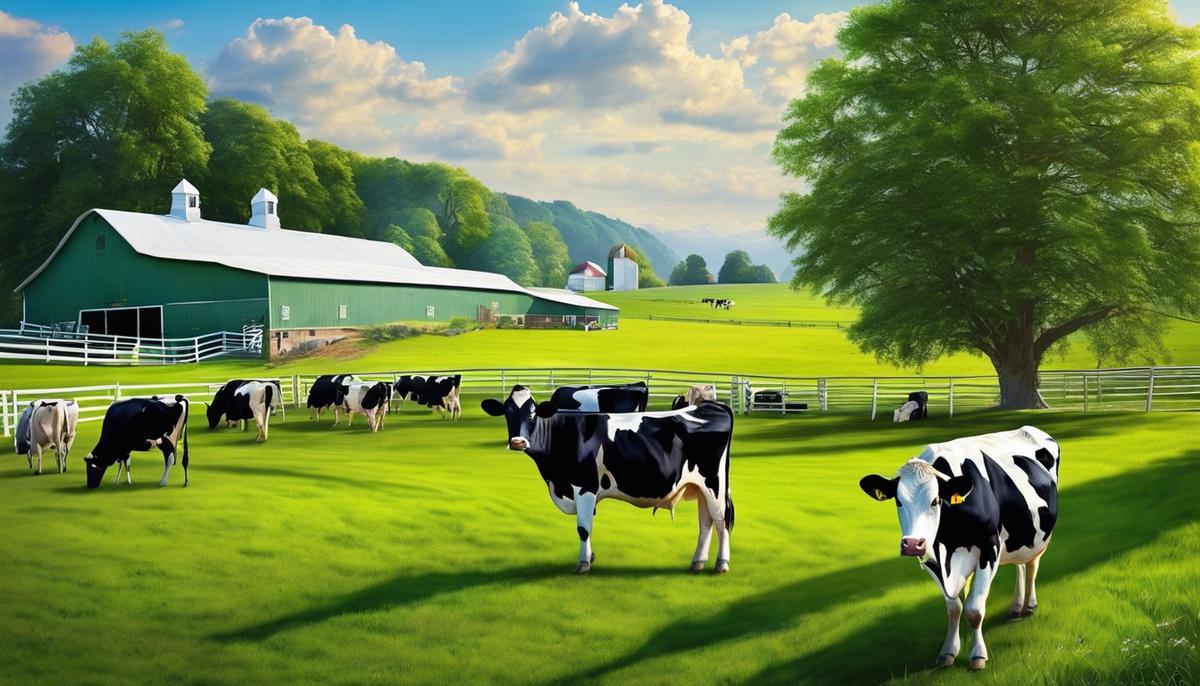
Scientific Aspects of Dairy Production
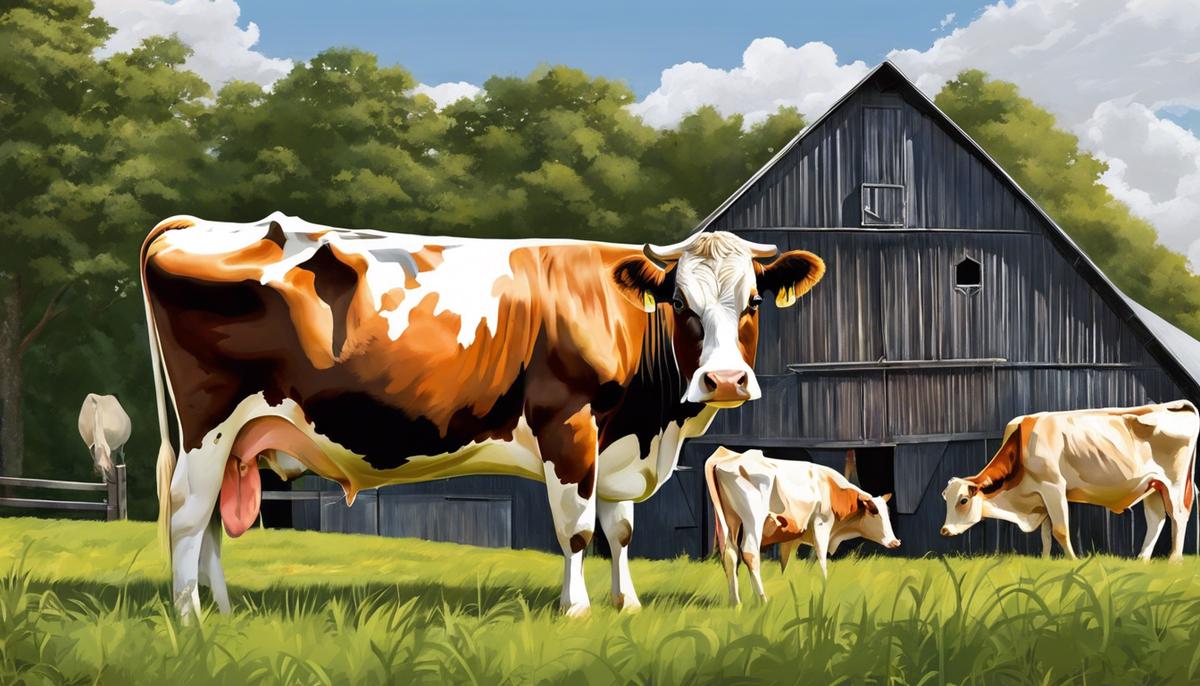
Social and Environmental Impact of the Dairy Industry
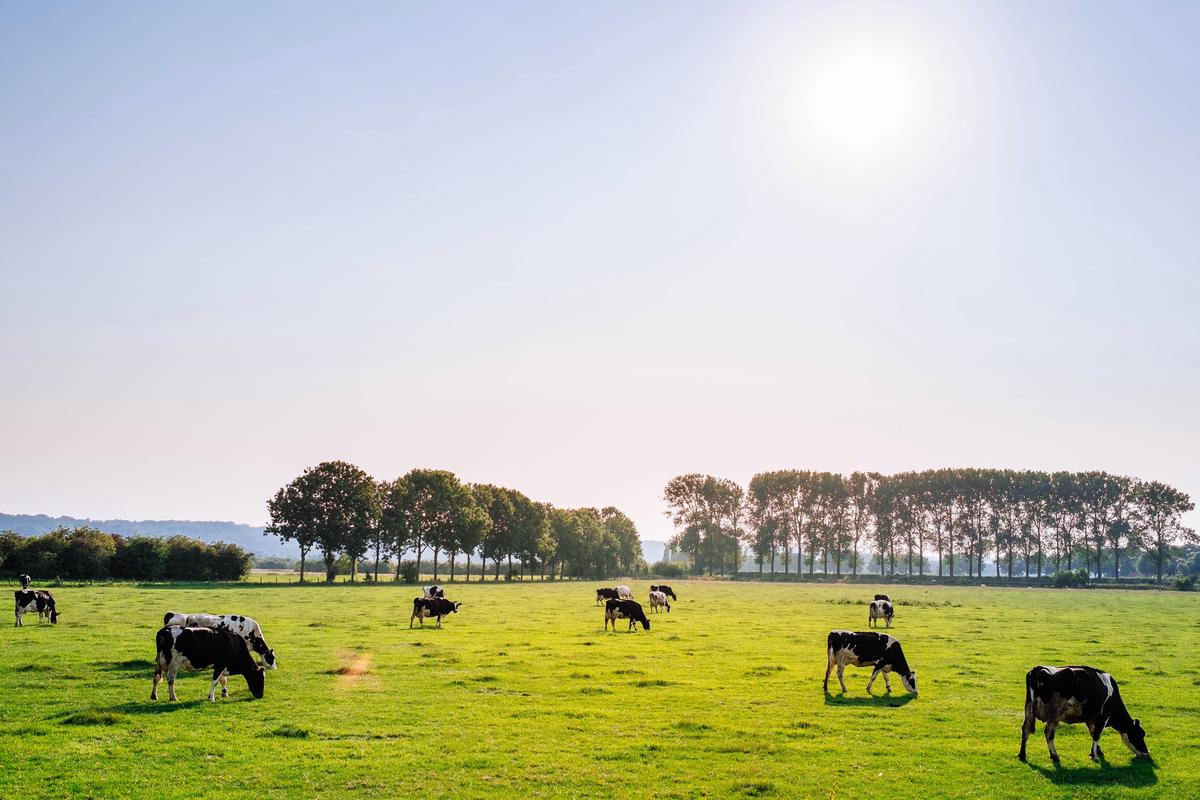
Future Prospects of the Dairy Industry
Dairy industry trends 2023
As we peer into the rapidly evolving world of the dairy industry in 2023, it is paramount for us to recognize the profound effects driven by technological advancements, consumer preferences, sustainability efforts, and regulatory changes. From the pastures to the grocery shelves, developments in the dairy industry are remolding the traditional practices and embarking on a journey that marries advanced technology with sustainability. Sophisticated automation and smart farming techniques are redefining the production processes, while a more conscious consumer base is shaking up market demand. In the backdrop of these changes, regulatory standards continue to evolve as they seek to maintain the delicate balance between boosting innovation and safeguarding environmental safety and animal welfare. The following discussion offers a deep dive into these diversified yet interconnected areas that define the dairy industry trends in 2023.
Advancements in Dairy Technology
In the rapidly evolving world of 2023, technology quenches the entrepreneurial spirit with remarkable innovation.
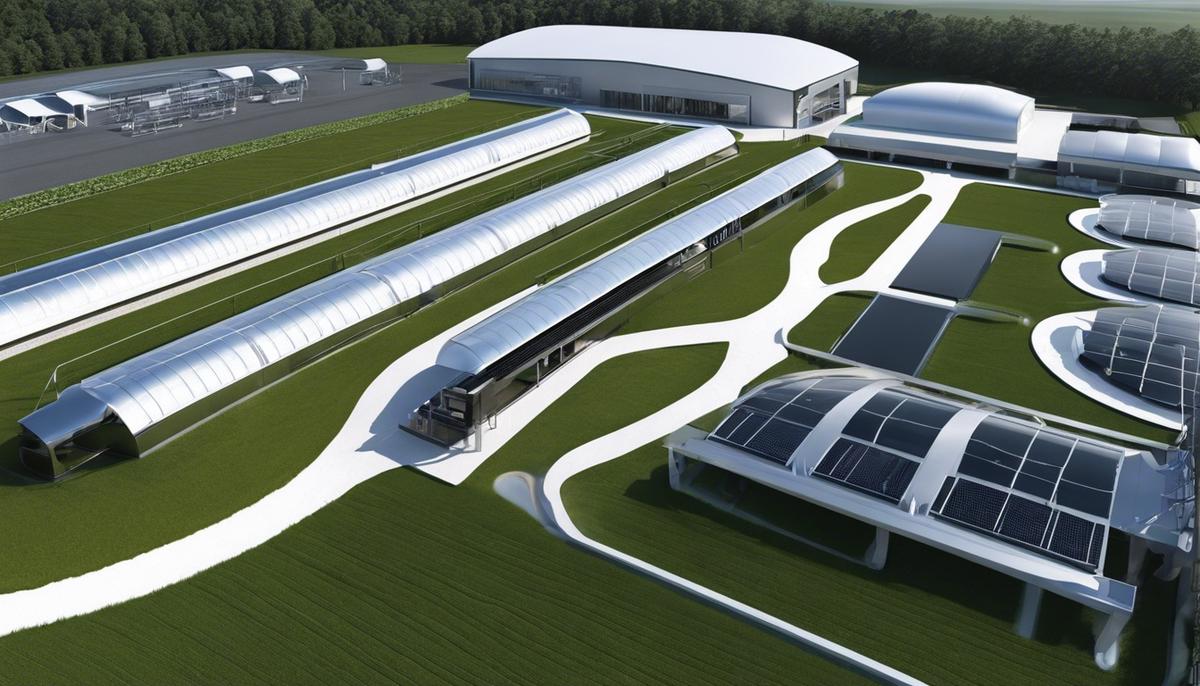
Sustainability in Dairy Industry
The Future is Now: Sustainability Transforming the 2023 Dairy Industry
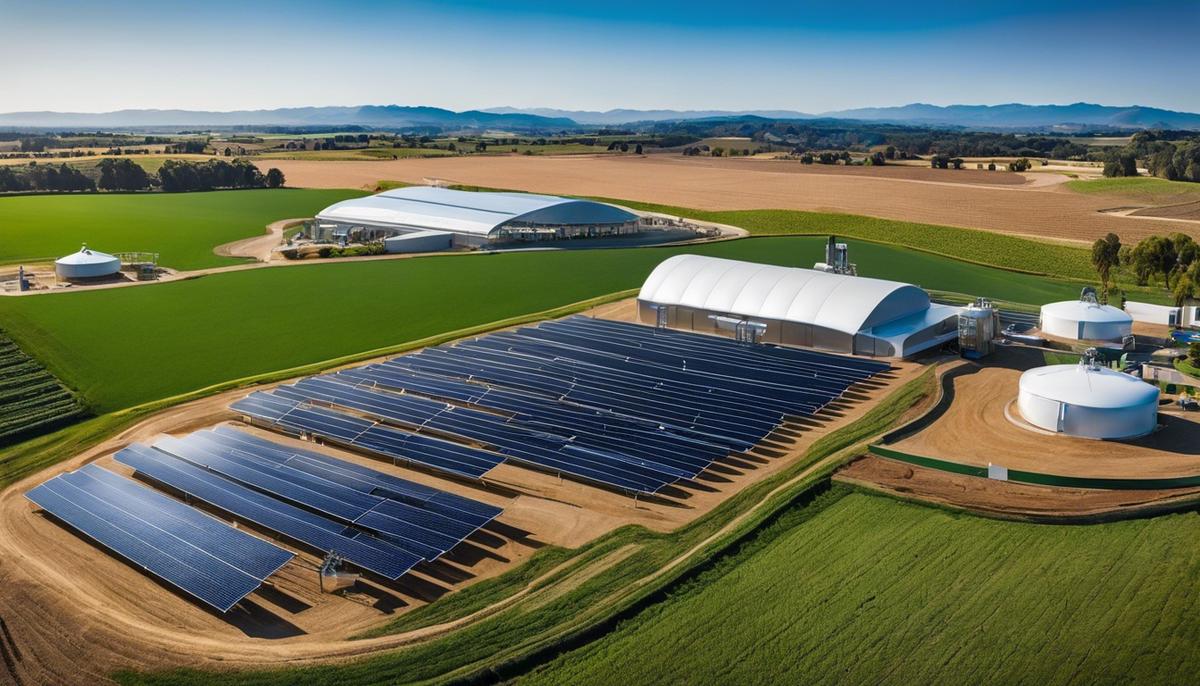
Consumer Preferences and Market Demand in Dairy
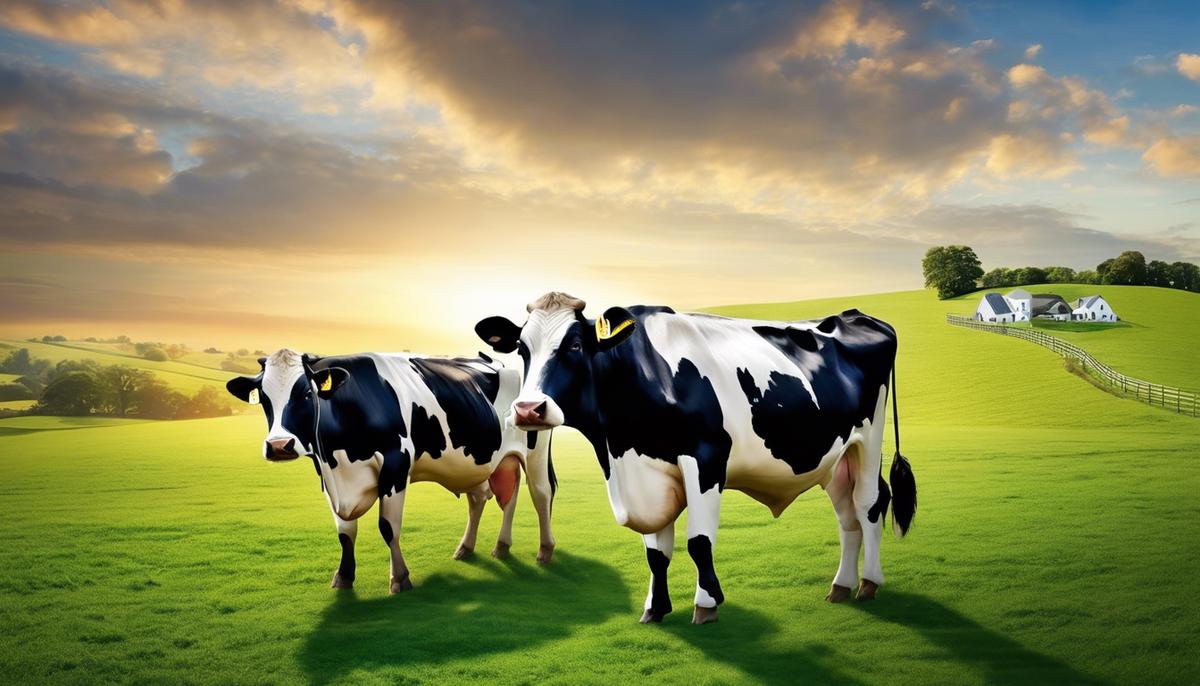
Regulatory Changes in the Dairy Sector
